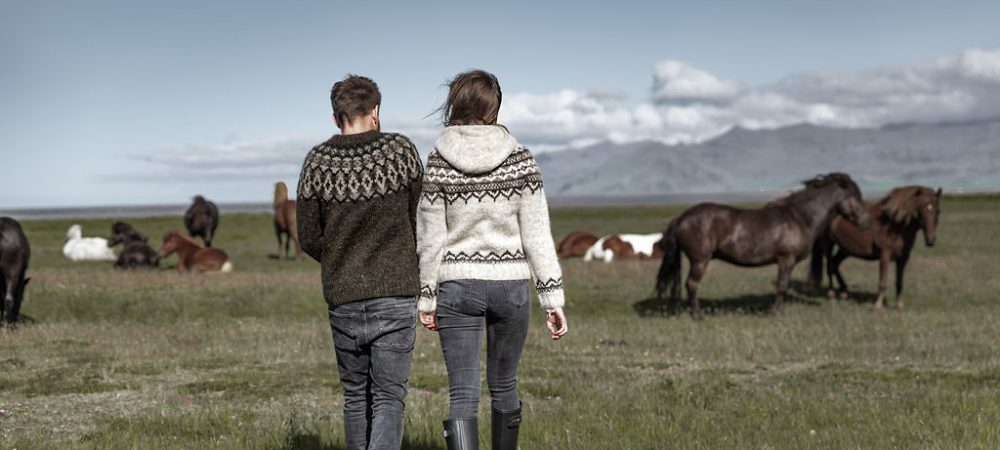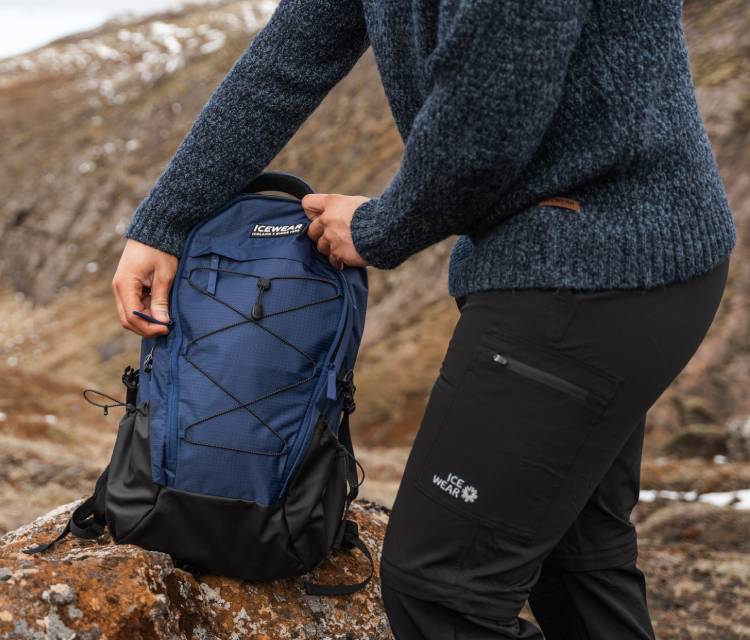Iceland’s sheep are a source of conversation for many reasons. With more than 800,000 roaming the island nation, Iceland has far more sheep than people. In fact, there are over twice as many sheep as there are humans! And, naturally, Icelandic wool is a big part of the country’s economic activity, too. It’s positively woven into the culture and also serves as one of the nation’s biggest exports.
Each year, the month of September brings sheep to the forefront of conversation for another reason when the annual réttir, or the Iceland sheep roundup, takes place mid-month. During the summer months, sheep are left to roam and graze the highland grasses; and the ancient tradition of the réttir is how the sheep are all herded and sent back to their farms for the winter.
The history of sheep (and wool) in Iceland
Sheep were first brought to Iceland in the 9th century AD from Norway. Early pioneers used them as sources of wool, fur, and food. Icelandic sheep then faced new and challenging weather conditions on the island for generations. They were also bred in isolation, with Iceland sharing no borders with any other country.
The result? Iceland’s sheep population and their ideal wool are both totally unique.
For generations, sheep have been the lifeblood of the small North Atlantic island. The unique Icelandic breed includes over 30 natural sheep colors, though most are white with a large population of black-wool sheep as well.
The history of the Icelandic réttir
Ever since sheep first arrived in Iceland, they were set free to roam the highlands during the summer months just after lambing time in May. The Iceland sheep gathering or réttir in September is the annual event when famers and their families—and sometimes tourists—herd sheep down the valleys for shearing season.
The Iceland sheep herding process takes several days and entire communities turn out on foot, in ATVs and on horseback. Sheep stock are retrieved non-discriminately—in other words, all sheep are herded together for the journey back to the valley. The task is a grueling one, and outdoor clothing like wellies and raincoats are a must. The mountain treks invite strong Northern winds, which even in September can be freezing cold at that altitude. And torrential rain often blows sideways right into the farmers combing the mountains for their flocks. Many supplies are needed to keep going until the work is done. The same harsh weather conditions that made Icelandic sheep what they are also come into play for the communities participating in the réttir.
Once sheep are herded back to the farming communities, the réttir is the process of sorting flocks to return them to their farmers. The ancient tradition uses circular pens consisting of an inner and outer circle with compartments (each assigned to a particular farmer) set between them.
The Icelandic sheep gathering tradition is a source of great interest and excitement for Icelanders and tourists alike, and is always accompanied with drinking, singing and other festivities. Food is another big part of the réttir, with several traditional Icelandic dishes making special appearances.
Iceland sheep herding is a millennia-old practice steeped with tradition. To read more about the sheep of Iceland, see our infographic on Icelandic sheep and wool.
Icelandic wool and Icelandic sweaters
Icelandic wool is unique in that it contains two different types of hair. This plush combination serves as a natural barrier from the wet and cold weather that Icelandic sheep have been subjected to for more than 1,000 years. The outer layer is coarse and long (called “tog” in Icelandic), and is water-resistant. Underneath it, there is a layer of short hair (called “þel” in Icelandic), which is soft and keeps the sheep warm in even the harshest Icelandic winter conditions.
The dual layers of this unique wool were combined in the development of Icelandic wool sweaters to provide humans with the very same protection that Icelandic sheep enjoy, even in the face of the harshest rain or snow.
Read more about traditional Scandinavian sweater patterns and design.









